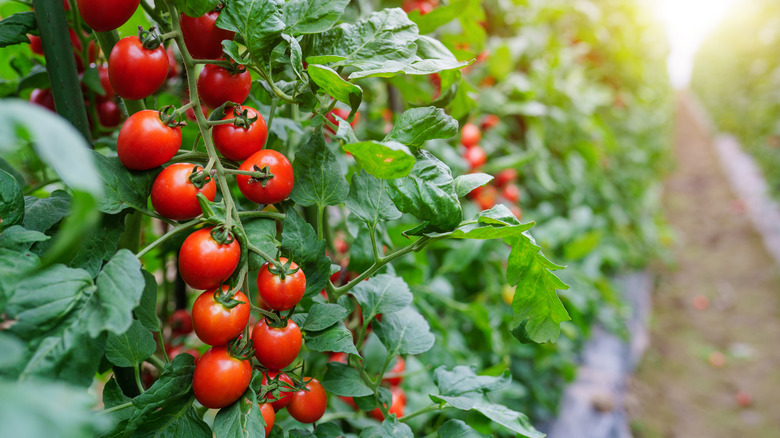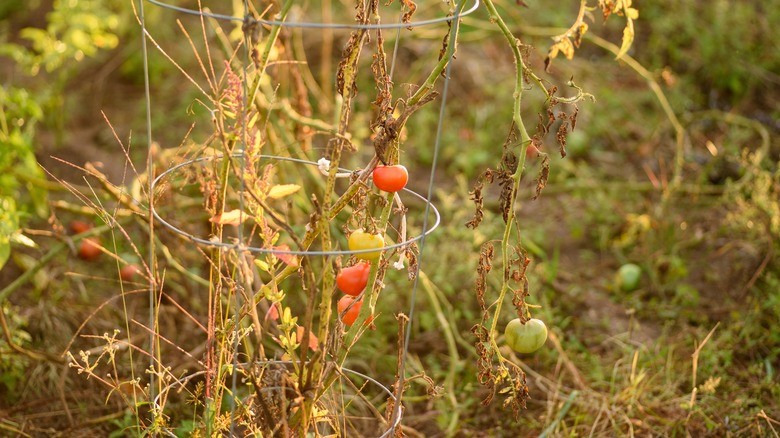What, Exactly, Is A Tomato Cage And How Does It Work?
If you've ever grown tomatoes, you know they can get unruly, starting small and polite, but sprawling in every direction once the season kicks in. That's where a tomato cage comes in. A tomato cage is a cylindrical or conical structure, usually made from metal, heavy plastic, or wire, and it comes in different shapes and sizes. It's designed to surround a tomato plant and provide vertical support, encouraging upward growth, and can also stop your tomato plants from developing splits. Without support, those stems can snap under the weight of the fruit. A cage gently guides the stems through its openings and gives them something sturdy to lean on as they reach for the sun.
Letting tomatoes sprawl freely along the ground might seem natural, but it invites trouble due to soil contact and poor airflow. This creates the perfect setup for fungal diseases. A tomato cage solves both these issues. The result is healthier leaves, cleaner tomatoes, and less time spent on pruning, which most homegrown tomato plants don't need much of anyway.
It's important to remember that while tomatoes are vining plants that keep sending out long stems throughout the season, not every plant requires a cage. Cages are most useful for indeterminate varieties, one of the two main types of tomato plants. Indeterminate tomatoes grow like vines and naturally produce more leaves and stems. This means they tend to sprawl as the season goes on. Determinate varieties, on the other hand, grow more like compact bushes and don't usually need the same level of support. Understanding the difference is crucial, since it ultimately determines whether your tomato plants truly need a cage.
How to use a cage for your tomato plant
If you're thinking of using a cage for better growth of your tomato plants, the first thing to know is that it should always be placed over a young plant while the seedling is still small and manageable. Simply slip the cage over the plant and press the legs firmly into the soil, almost like putting it behind bars, which is perhaps why it's called a cage. From there, the cage becomes a constant in the plant's growth. As each branch stretches outward and upward, it naturally weaves itself through the grid. That means no fussing with string, stakes, or constant tying. The plant takes care of the work on its own, wrapping itself into the frame as it grows.
This early support pays off later, when clusters of fruit start to weigh down the stems. Instead of snapping or dragging on the soil, the branches stay lifted, cradling tomatoes that get more sun and face far less risk of disease. Eventually, once the plant has filled out, the cage all but disappears under its leaves. It stands tall and sturdy, carrying its fruit with ease and resulting in a fulfilling harvest of ripe, sun-warmed tomatoes. The cage might seem like a small step at the beginning, but it can really shape the entire growing season. Just water your caged tomato plants enough to end up with the juiciest fruits.

